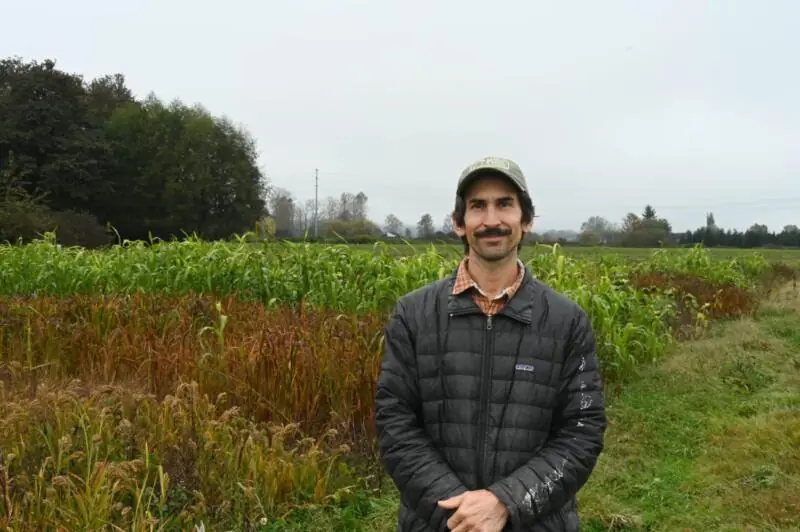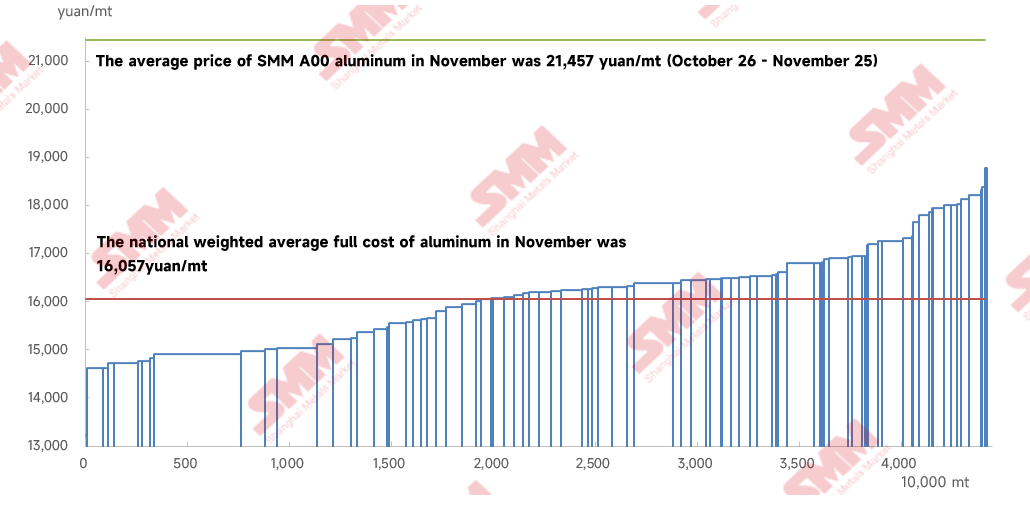India Must Work Assertively For Genetic Resources and Farmer Rights: Scientists Tell Govt Ahead of Peru Negotiations – The Wire India
Report on Advocacy for Equitable Genetic Resource Governance and Sustainable Development
A group of scientists has formally urged the Indian government to adopt a strategic and assertive stance at the 11th Governing Body Meeting (GB-11) of the International Treaty on Plant Genetic Resources for Food and Agriculture (ITPGRFA). The advocacy centers on rectifying imbalances in the global system of Access and Benefit Sharing (ABS), a critical issue that directly impacts the achievement of several Sustainable Development Goals (SDGs), including SDG 2 (Zero Hunger), SDG 10 (Reduced Inequalities), and SDG 15 (Life on Land).
Addressing Global Inequalities in Agricultural Innovation (SDG 10, SDG 17)
The primary concern is the systemic inequality between the technology-rich Global North and the biodiversity-rich Global South. The current framework allows for the uncompensated transfer of genetic wealth, undermining the principles of fair partnership for sustainable development (SDG 17).
The Current Imbalance in Access and Benefit Sharing (ABS)
- The Global North has derived significant commercial value from genetic resources originating in the Global South.
- The Global South has received minimal monetary compensation or non-monetary benefits, such as technology transfer, in return.
- This dynamic perpetuates global inequalities, hindering the economic progress of developing nations and their farming communities, which is contrary to the objectives of SDG 10.
Failures of the Existing International Framework
The report identifies critical systemic flaws in the ITPGRFA’s implementation that disadvantage provider countries and impede progress towards sustainable and just global institutions (SDG 16).
- The Unsettled Debt: Approximately seven million genetic accessions, largely from the Global South, have been transferred under the Multilateral System (MLS), generating billions in commercial value with negligible returns to the countries of origin.
- Failure of Voluntarism: The treaty’s financial mechanism, which relies on voluntary contributions to the Benefit Sharing Fund (BSF), has proven unsustainable and unjust, failing to create a reliable system for poverty reduction (SDG 1) among custodian communities.
- Transparency and Accountability Deficit: The MLS lacks transparency in reporting material transfers, and there is no effective mechanism to ensure benefits reach the provider communities, thereby eroding accountability and trust.
Upholding Sustainable Agriculture and Food Security (SDG 2, SDG 15)
The protection of genetic resources and the rights of the farmers who cultivate them are fundamental to ensuring global food security, promoting sustainable agriculture, and conserving biodiversity.
Protecting Farmers’ Rights and Agrobiodiversity
The scientists emphasize that safeguarding farmers’ sovereign rights over their genetic wealth is essential for the continued conservation and sustainable utilization of agrobiodiversity. This directly supports SDG 2 by ensuring the resilience of food systems and SDG 15 by promoting the sustainable use of terrestrial genetic resources.
India’s Role as a Global Standard
India’s domestic legislation, the Protection of Plant Varieties and Farmers’ Rights Act (PPV&FR Act, 2001), is presented as a global model for equitable governance. This Act grants specific legal rights to farmers over seeds, offering a just framework that can guide international negotiations toward achieving sustainable development targets.
Strategic Recommendations for the ITPGRFA GB-11 Negotiations (SDG 16)
To establish a just, transparent, and effective international institution, the scientists propose that India lead the Global South in advocating for a robust and legally binding system.
Key Policy Demands for a Fair Global Partnership
- Implement a Mandatory Benefit-Sharing System:
- Establish a “Mandatory Milestone Subscription System” that links benefit sharing directly to the commercial turnover of companies using the genetic resources.
- Secure a complete ban on any form of Intellectual Property (IP) on commercial products derived from genetic resources accessed through the MLS.
- Assert Sovereign Rights over Digital Sequence Information (DSI):
- Insist that DSI is a “digital proxy” of physical genetic resources and must be subject to the same mandatory benefit-sharing obligations.
- Mobilize the Global South to present a united front demanding a fair share of profits from the use of DSI.
- Employ Strategic Diplomatic Leverage:
- Firmly refuse any expansion of the treaty’s Annex I until a fair benefit-sharing mechanism is secured.
- Withhold any agreement on DSI until the mandatory MLS enhancement package is finalized and adopted, using this as a tool to ensure a just outcome.
SDGs, Targets, and Indicators Analysis
1. Which SDGs are addressed or connected to the issues highlighted in the article?
-
SDG 2: Zero Hunger
- The article’s entire focus is on Plant Genetic Resources for Food and Agriculture (PGRFA), which are essential for ensuring long-term food security, improving nutrition, and promoting sustainable agriculture. Protecting this genetic diversity and ensuring farmers’ rights are central to achieving zero hunger.
-
SDG 15: Life on Land
- The protection of “genetic wealth” and “agrobiodiversity” discussed in the article is a core component of SDG 15, which aims to protect, restore, and promote sustainable use of terrestrial ecosystems and halt biodiversity loss.
-
SDG 17: Partnerships for the Goals
- The letter explicitly calls for strengthening global partnerships by urging the Indian government to “mobilize the Global South to present a united front.” This addresses the need for international cooperation to achieve sustainable development, particularly in ensuring fair access to technology and resources.
-
SDG 10: Reduced Inequalities
- The article highlights the significant imbalance between the “technology-rich Global North” and the “Global South,” where the latter provides genetic resources without receiving fair monetary and non-monetary benefits. This directly relates to the goal of reducing inequality within and among countries.
2. What specific targets under those SDGs can be identified based on the article’s content?
-
SDG 2: Zero Hunger
- Target 2.5: “By 2020, maintain the genetic diversity of seeds, cultivated plants and farmed and domesticated animals and their related wild species… and promote access to and fair and equitable sharing of benefits arising from the utilization of genetic resources and associated traditional knowledge, as internationally agreed.” The article’s central argument revolves around the failure of the current system for “Access and Benefit Sharing (ABS) of Genetic Resources” and the urgent need to protect India’s “genetic wealth.”
-
SDG 15: Life on Land
- Target 15.6: “Promote fair and equitable sharing of the benefits arising from the utilization of genetic resources and promote appropriate access to such resources, as internationally agreed.” The letter directly addresses this by highlighting the “current impasse on Access and Benefit Sharing (ABS)” and demanding a “just and mandatory system for benefit-sharing.”
-
SDG 17: Partnerships for the Goals
- Target 17.7: “Promote the development, transfer, dissemination and diffusion of environmentally sound technologies to developing countries on favourable terms…” The scientists’ demand for the fulfillment of “non-monetary benefits of technology transfer” from the Global North to the Global South aligns perfectly with this target.
3. Are there any indicators mentioned or implied in the article that can be used to measure progress towards the identified targets?
-
Indicators for Fair Benefit-Sharing Frameworks
- Indicator 15.6.1: “Number of countries that have adopted legislative, administrative and policy frameworks for fair and equitable benefit-sharing.” The article provides a direct example for this indicator by citing India’s “Protection of Plant Varieties and Farmers’ Rights Act (PPV&FR Act, 2001)” as a model for “equitable genetic resource governance.”
-
Indicators for Genetic Resource Conservation
- Indicator 2.5.1: “Number of plant and animal genetic resources for food and agriculture secured in either medium or long-term conservation facilities.” The article gives a quantifiable figure relevant to this indicator by stating, “Approximately seven million accessions have been transferred under the Multilateral System (MLS).”
-
Implied Indicators for Financial Benefit-Sharing
- The article implies the need for an indicator to measure the financial success of benefit-sharing. It points out that “Monetary payments accrued in the Benefit Sharing Fund (BSF) have been minimal,” suggesting that the total value of this fund is a critical measure of progress. It also notes that the “commercial use of PGRFA is virtually undetectable,” implying that tracking the number and value of commercial products derived from these resources is a necessary, though currently missing, indicator.
4. Table of SDGs, Targets, and Indicators
| SDGs | Targets | Indicators |
|---|---|---|
| SDG 2: Zero Hunger | Target 2.5: Maintain genetic diversity and ensure fair and equitable benefit-sharing from the use of genetic resources. | Indicator 2.5.1: The article mentions “seven million accessions” transferred under the Multilateral System, a quantifiable measure of genetic resources being exchanged. |
| SDG 15: Life on Land | Target 15.6: Promote fair and equitable sharing of benefits from the utilization of genetic resources. | Indicator 15.6.1: The article cites India’s “Protection of Plant Varieties and Farmers’ Rights Act (PPV&FR Act, 2001)” as a specific example of a national legislative framework. |
| SDG 17: Partnerships for the Goals | Target 17.7: Promote the transfer of environmentally sound technologies to developing countries. | The demand for “non-monetary benefits of technology transfer” from the Global North to the South serves as a qualitative indicator of progress toward this target. |
| SDG 10: Reduced Inequalities | Target 10.b: Encourage financial flows to states where the need is greatest. | The article’s criticism that “Monetary payments accrued in the Benefit Sharing Fund (BSF) have been minimal” implies that the amount in this fund is a key indicator of financial flows for benefit-sharing. |
Source: m.thewire.in
What is Your Reaction?
 Like
0
Like
0
 Dislike
0
Dislike
0
 Love
0
Love
0
 Funny
0
Funny
0
 Angry
0
Angry
0
 Sad
0
Sad
0
 Wow
0
Wow
0















































/environment-climate-change-and-health-(ech)/water-sanitation-hygiene-and-health-(wsh)/landfill-tuvalu-36092.tmb-1200v.jpg?sfvrsn=5c21fe40_1#)


.jpg.webp?itok=0ZsAnae9#)

























